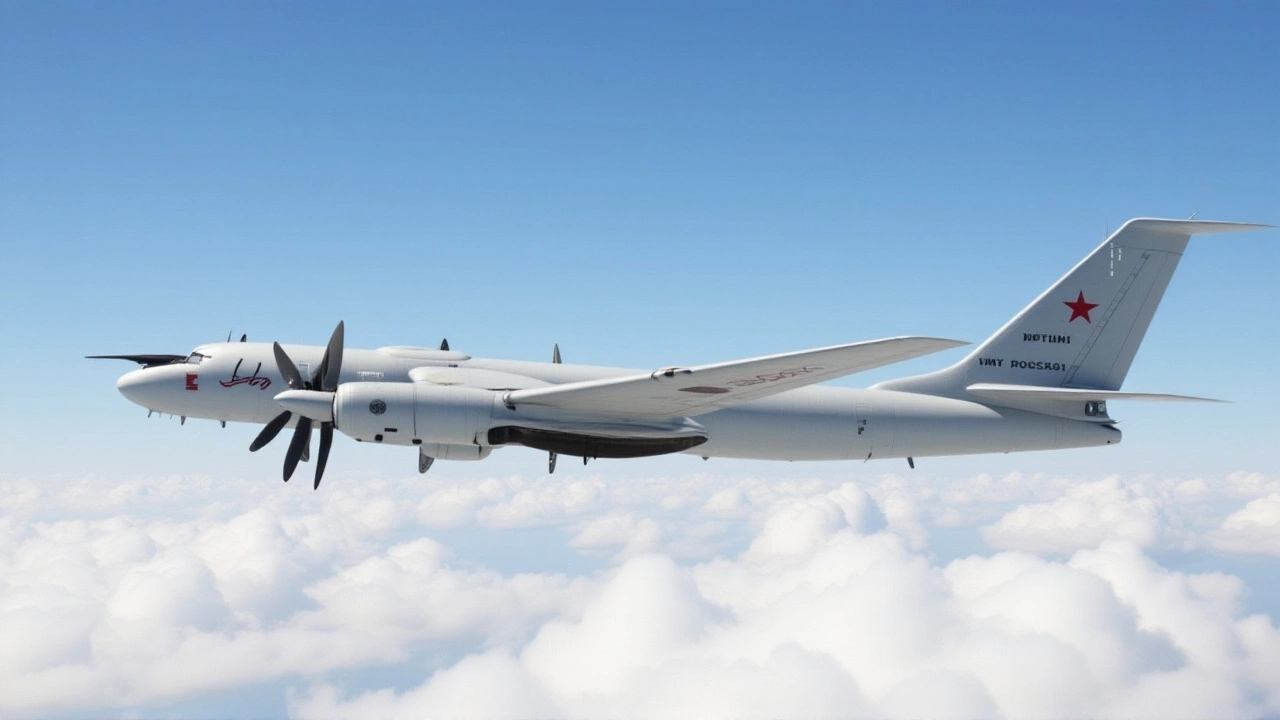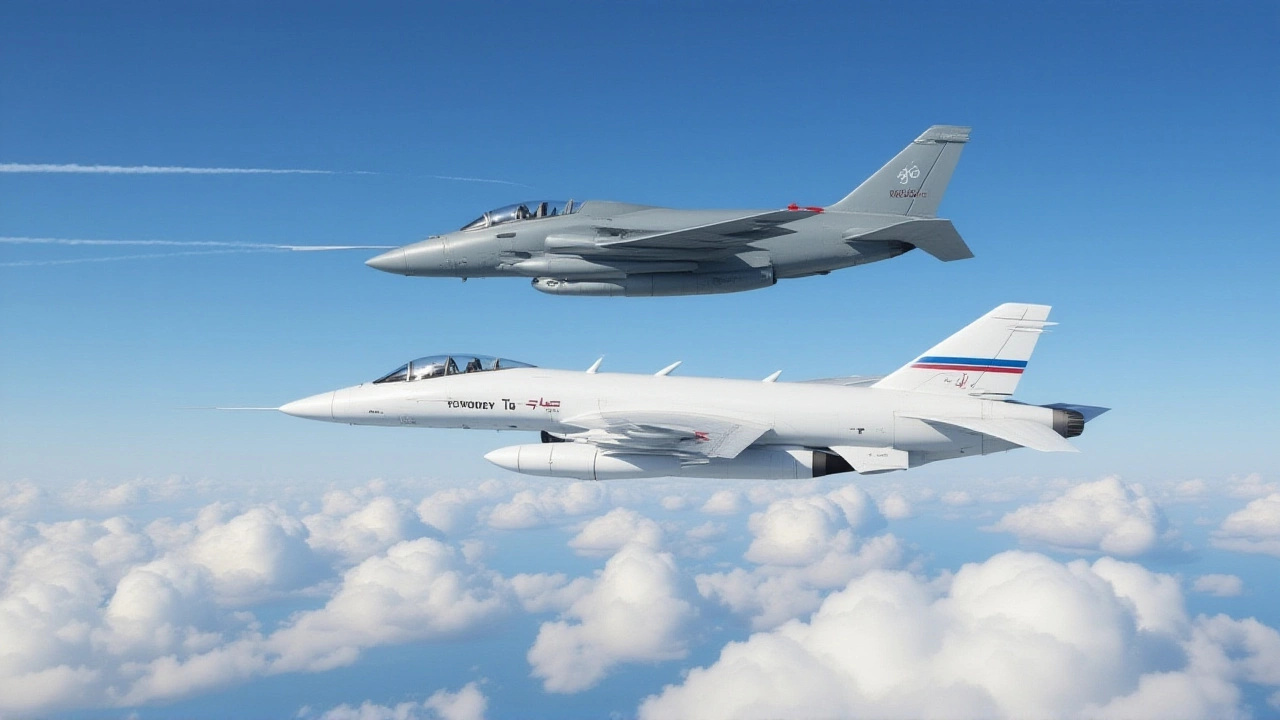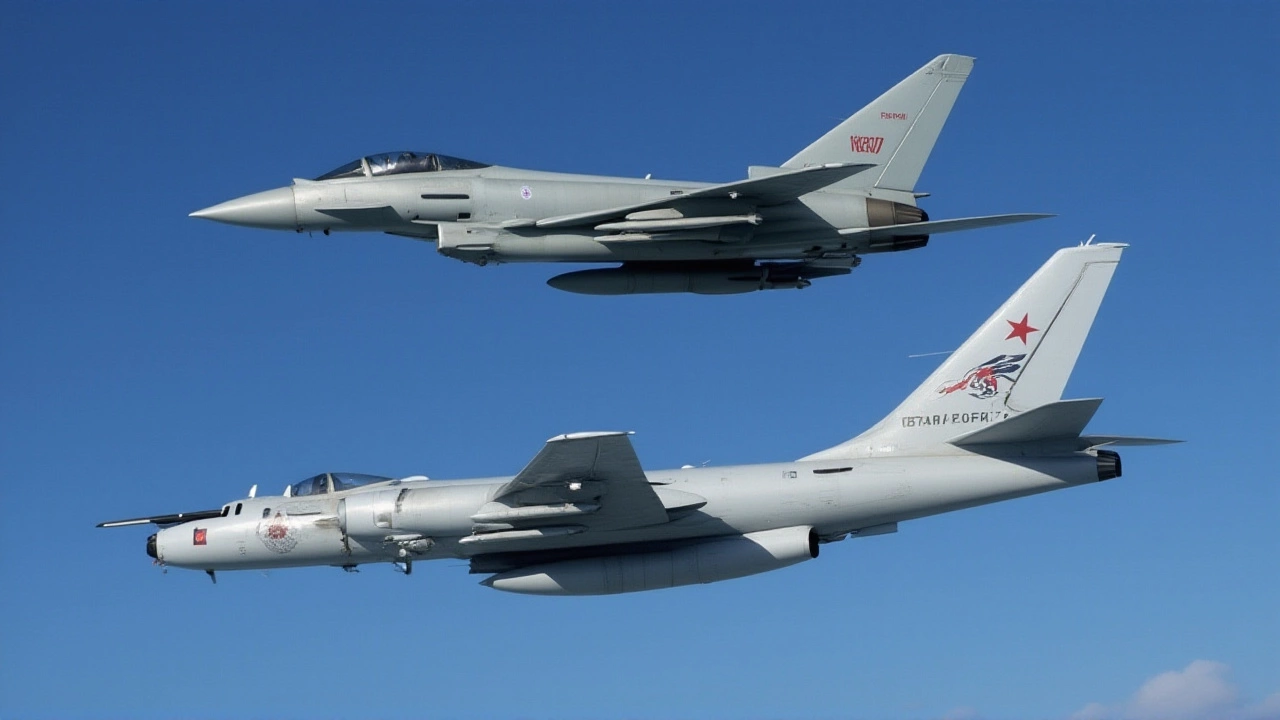When Royal Air Force Typhoons, stationed at Malbork under North Atlantic Treaty Organization's Operation CHESSMAN, scrambled six times between June 7 and June 13, 2025, they intercepted a total of 15 Russian military aircraft. The confrontations unfolded near the Kaliningrad enclave, jolting NATO’s enhanced air‑policing posture and reminding Europe how thin the line between routine surveillance and outright incursion can be.
Background to NATO’s Enhanced Air Policing
Since the 2022 invasion of Ukraine, NATO has bolstered its Quick Reaction Alert (QRA) network, deploying extra fighter squadrons to the alliance’s eastern flank. Operation CHESSMAN is the United Kingdom’s contribution, placing a detachment of Typhoon FGR4 jets at the 22nd Tactical Air Base, a Cold‑War‑era airfield that still buzzes with activity.
The base, officially known as 22nd Tactical Air Base, lies just 40 km south of the Russian‑held Kaliningrad region. Its proximity makes it a frontline outpost for NATO’s air‑space guardians, giving pilots a razor‑thin margin for error when Russian aircraft skirt the border.
Week of Intercepts: June 7–13, 2025
The first scramble came on Saturday, June 7, when radar picked up an unidentified flight exiting the Kaliningrad Flight Information Region. The target turned out to be an Antonov An‑30 – a Soviet‑era aerial reconnaissance platform NATO codenamed “CLANK”.
Two RAF pilots, members of No. II Squadron, lifted off within minutes. Their orders were simple: shadow the An‑30, verify it stayed clear of NATO‑monitored airspace, and escort it out if needed. The aircraft complied after a ten‑minute overflight, and the Typhoons returned to base.
Later that same sortie, the same pair was retasked to intercept an Ilyushin Il‑20M – a signals‑intelligence platform NATO calls “COOT A”. The Il‑20M cruised at low altitude, its radar‑absorbing skin barely visible on primary radar. The RAF jets closed in, radio‑hailing the spy plane with no response. After a brief tactical dialogue with NATO’s Danish QRA, the Il‑20M was guided out of the identification zone.
One of the pilots later told reporters, “Today marked my first operational scramble, and while the adrenaline was high, training took over the moment we launched. Intercepting two aircraft in one mission was intense and gave me a new level of respect for the demands of QRA.”
June 13 proved the busiest day. At exactly 10:50 AM, an Il‑20M pierced Polish sovereign airspace, flying two kilometres deep before NATO fighters arrived. The crew of the two Typhoons – a flight lead and a wingman – were airborne within three minutes, looping the intruder over the Baltic Sea and forcing it to retreat northward. The aircraft had no filed flight plan and ignored several radio hails, a pattern NATO has seen increasingly often from Russian reconnaissance flights.
Details of the Il‑20M Incursions
All three Il‑20M sightings this week shared a common toolkit: sophisticated ELINT (electronic‑signals intelligence) suites, high‑resolution cameras, and a distinctive low‑and‑slow flight profile that makes them easy to spot on civilian ADS‑B feeds – if they bother to turn the transponder on.
The June 13 incursion was the first time a Russian spy plane breached NATO airspace since the start of the year. According to the RAF Expeditionary Air Wing (EAW) spokesperson, the aircraft “failed to file a flight plan or communicate with civilian air traffic control,” a breach that triggers the NATO QRA protocol automatically.
Following the intercept, the Il‑20M was handed off to the Danish QRA group, which completed the escort out of the Baltic. The seamless handover demonstrated the interoperability that NATO has been polishing since 2022, though the sheer number of scrambles – six in seven days – suggests the alliance is now dealing with a sustained surge, not isolated blips.

Broader Russian Air Activity and NATO Response
Poland isn’t the only NATO member seeing elevated Russian traffic. Last month, RAF Typhoons chased down two Sukhoi Su‑30MKIs and another pair of Il‑20Ms near the Baltic. The Netherlands’ Royal Air Force did the same with three unidentified Russian aircraft, all of which failed to identify themselves during radio attempts.
Across the Atlantic, the pattern repeated. On September 24, 2025, North American Aerospace Defense Command (NORAD) intercepted a formation of two Tupolev Tu‑95 strategic bombers and two Su‑35 fighters in the Alaska Air Defense Identification Zone (ADIZ). Though the Russian planes never entered U.S. or Canadian sovereign airspace, NORAD dispatched an E‑3 Sentry AWACS, four F‑16 Fighting Falcons, and four KC‑135 refueling tankers to shadow the formation.
The Alaska ADIZ encounters echo the Baltic incidents: Russian aircraft flitting close to NATO‑allied airspace without filing flight plans, testing the resolve of alliance radar nets and QRA assets. In a statement, NORAD noted, “This Russian activity in the Alaskan ADIZ occurs regularly and is not seen as a threat,” a line that feels oddly reassuring given the recent European escalation.
Hungary also played its part on the same day as the Alaskan scramble, with Gripen fighters intercepting three MiG‑31s, a Su‑35 and a Su‑30 over the Carpathian‑Baltic corridor. The multinational response underscores a new reality: Russian long‑range aviation is no longer a sporadic nuisance but a coordinated pressure campaign across multiple theatres.
What Lies Ahead for NATO’s Air Policing?
Analysts say the uptick in Russian overflights is a calculated signal, testing how quickly NATO can scramble fighters and how unified its response will be under strain. Dr. Elena Markova, a senior fellow at the European Security Institute, warned, “If the pattern continues, we could see a situation where NATO’s QRA assets are stretched thin, forcing member states to consider permanent basing of additional fighters in the east.”
Britain’s Ministry of Defence has already signaled that the UK will keep a permanent Typhoon presence in Poland beyond the current rotation, citing “the need for persistent deterrence.” Meanwhile, NATO’s Allied Air Command (AIRCOM) is reviewing its posture, contemplating a “layered air‑space management” model that would layer fighter patrols, AWACS surveillance, and space‑based sensors to close detection gaps.
For the pilots on the ground at Malbork, the next scramble could come at any moment. Their readiness drills and coffee‑filled briefings now feel like a regular part of life, not an occasional drill. As one flight lead quipped, “We’re not just watching the skies; we’re living them.”
Key Facts
- Six RAF scrambles between June 7‑13, 2025, intercepted 15 Russian aircraft.
- Aircraft involved: Antonov An‑30, Ilyushin Il‑20M, Su‑30MKI (previous month).
- Operations based at 22nd Tactical Air Base, Malbork, Poland.
- NATO’s enhanced QRA network now includes permanent UK Typhoon presence.
- Simultaneous Russian activity detected in the Alaska ADIZ and over Hungary.

Frequently Asked Questions
Why did the Russian Il‑20M cross into Polish airspace?
The Il‑20M was on a signals‑intelligence mission, gathering electronic emissions over the Baltic. Its flight plan omitted the Polish corridor, either intentionally to avoid detection or due to a navigation error, prompting NATO QRA forces to intervene.
What is Operation CHESSMAN?
Operation CHESSMAN is the United Kingdom’s contribution to NATO’s enhanced air‑policing mission in the alliance’s eastern flank. It places a detachment of Typhoon fighters at Malbork, Poland, to provide rapid‑reaction intercepts for any air‑space violations.
How does NATO coordinate interceptions across different member states?
NATO’s Allied Air Command (AIRCOM) runs a real‑time air picture that links radar, AWACS, and satellite feeds. When an unidentified aircraft is detected, the nearest QRA squadron – like the RAF in Poland or the Danish F‑16s – is tasked, and hand‑overs occur seamlessly as the aircraft cross national FIRs.
Are the recent Russian flights a direct threat to NATO members?
While none of the aircraft breached sovereign airspace, their proximity and lack of communication raise the risk of accidental escalation. NATO views the pattern as a strategic pressure tactic rather than an immediate kinetic threat, but it has prompted a heightened state of alert.
What steps is the UK planning to take after these intercepts?
The Ministry of Defence has indicated a permanent Typhoon presence at Malbork will continue beyond the current rotation, and additional funding is earmarked for faster scramble cycles and upgraded radar links with NATO partners.
